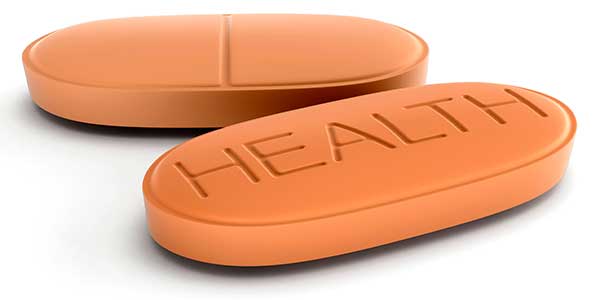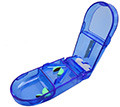Pill Splitting
Pill splitting or tablet splitting involves buying higher strength tablets and then breaking the tablets in half or quarter doses as a way to lower drug costs.

What is pill splitting ?
• It is not uncommon for a 30 mg tablet to have the same copay as the 15 mg version. To save money people will buy the 30 mg tablets and split them in half. Essentially you are buying two doses of the prescription for the price of one.
When the economy is down, people tend to change the way they take medications. This includes skipping doses and splitting tablets in an effort to save money.
Depending upon the medication this might be a smart money-saving strategy, but the practice can be risky if the wrong medication is split.
• Pharmaceutical companies are against this practice. They say splitting is dangerous but studies do not support that argument.
The Food and Drug Administration (FDA), the American Medical Association, and other medical organizations advise against splitting pills unless a drug's labeling actually specifies the tablet can be split.
♦ It is important to understand not all pills can be split safely.
Due to the rising costs for prescription drugs, (especially brand-name drugs) many doctors and even health insurance plans are suggesting pill splitting to try to help keep patients from stopping or skipping their medication.
Most notably, the cholesterol-lowering drugs known as statins can be split as can many of the drugs used to treat high blood pressure and depression.
♦ The easiest pills to split are relatively flat round ones with a scored center. That’s a slightly indented line that runs across the center of the pill. However, many pills are too small to split easily and evenly. And not every pill that has a scored center is meant to be split. Consult your doctor or pharmacist first.
♦ Doctors have long suggested pill splitting but the reason was not so much cost related in the beginning. Doctors were asking patients to split pills so they would be able to take a lower dose and in that way experience lower risks of side effects. If you are considering splitting your medication please speak with your doctor first.
♦ Many insurance companies favor pill-splitting because it saves them money. Some insurance companies now provide a list of approved drugs to split.
Drug manufacturers say pill splitting can be dangerous. But studies to date have not shown any adverse impact on health.
In addition, by reducing the cost of prescription medicines, pill splitting could improve health outcomes by helping people afford the drugs they need to comply with the drug regimens their doctors recommend.
Best practices for pill splitting
The U.S. Food and Drug Administration (FDA) has put out a list of “Best Practices for Tablet Splitting.” But it doesn’t fit all situations. The main points are summarized here:
• FDA-approved tablets that can be safely split – look for the label insert and package insert – in the “HOW SUPPLIED” section look for guidance on splitting.
There is no insert for most medicines. The vast majority of people who fill prescriptions at big box pharmacies get a bottle of pills and a brief description of the medicine. These descriptions seldom mention tablet splitting.
• The tablet will be scored with a mark indicating where to split it.
This can be confusing because some tablets are scored but splitting is not recommended. And some tablets are not scored but can be split.

• The FDA suggests patients talk to their healthcare provider – this point cannot be over emphasized.
• Only split pills as you need them and take the split halves before splitting more tablets.
The reasoning behind this suggestion is that heat, humidity, or moisture might affect the medication more once it is split.
This suggestion runs the risk of the patient forgetting they are to split the pills before taking and then accidentally taking the whole pill instead, resulting in a higher drug dose than the doctor intended.
• Consider using a tablet splitter to cut your pills in half.

• Splitters may not be appropriate for oddly shaped tablets.
• Don’t use a knife or razor to cut tablets as this may splinter pills and you risk cutting yourself.
• When changing to a new medication or even generic version ask your doctor if you can cut the new tablet.
Why splitting pills can be risky
You might get confused about the correct dose.
There have been cases when people have purchased higher strength tablets intending to split them, but then they forgot to split them. Instead, they took the whole tablet. This led to accidentally taking too much medicine.
Equal distribution of medicine in split tablets is questionable.
Studies have shown that the actual dose in each half of a split tablet often is different. So while the two halves may look the same, they don't necessarily contain equal amounts of medicine.
Even if the tablet is scored with a line that runs down the middle, one half may actually have more medicine than the other.
Some tablets are hard to split.
Some tablets are too small to split, may have an unusual shape that makes them hard to split, or may crumble more easily when split. Also, some people may not be able to split tablets correctly. These factors make it difficult to accurately split a tablet.
Not all pills are safe to split.
Patients may mistakenly think that any pill can be split. But some pills, such as capsules and time-released drugs, should always be taken whole.
♦ Some tablets are coated with a substance that helps to release the medicine slowly. Splitting these tablets destroys the coating, which means you might absorb the medicine too fast or not at all.
• The dose you take of most medicines is very important. If you don’t get the right dose, the effect of the drug may be substantially reduced.
Your doctor should know which drugs can be split and which cannot. You can consult a pharmacist who may be willing to show you how to split your pills.
Pills should only be split in half and never into smaller portions, such as into thirds or quarters.
There is no official, complete list of medicines that can be split, and some drugs are dangerous to split. That makes it doubly important to consult a doctor or pharmacist.
Generally the following kinds of pills should not be split:
• Chemotherapy drugs
• Anti-seizure medicines
• Birth control pills
• Blood thinners (Coumadin, warfarin)
• Capsules of any kind that contain powders or gels
• Pills with a hard outside coating – many are designed to:
– Release medication over time
– Outside coating protects stomach
– Keeps the pill from falling apart easily
• Tablets that are intended to release medication gradually are referred to by several terms. The most common ones are:
Extended-release (ER, XR XL), sustained-release (SR) and controlled-release (CR).
♦ Timed-released medications are designed to release the active drug slowly and steadily into the bloodstream. Timed-release medications should not be split.
Some drug manufacturers will use one of these terms in the labeling. But there are no regulations specifying the use of any of these terms. As a result, some extended-release medications are not labeled. The patient needs to consult with the prescribing physician or read the drug’s literature to find out.
Why do it if it is risky ?
Cost. Rising prescription costs are forcing patients to consider this option. Many medications for chronic illnesses, such as hypertension, diabetes, or high cholesterol cost hundreds of dollars a month.
Insurance companies in turn are shifting more of these costs to the patient in the form higher copays and deductibles.
Restrictive insurance plans are refusing to cover some drugs altogether, leaving the patient no other options.
♦ Done correctly pill splitting can be a very effective way to keep prescription costs from getting out of control. Typically, your doctor would write a prescription for double the strength of your medicine. You then take half a pill thereby extending your 1-month supply out to 2-months.
Prescription costs are a bit odd.
• A 20 mg tablet is often times the same price as a 10 mg tablet. If you need to take 10 mg you can save in effective 50% by buying the 20 mg tablet and splitting it.
This is why a lot of people are splitting pills.
♦ It is very important that you discuss this with your healthcare provider first.

